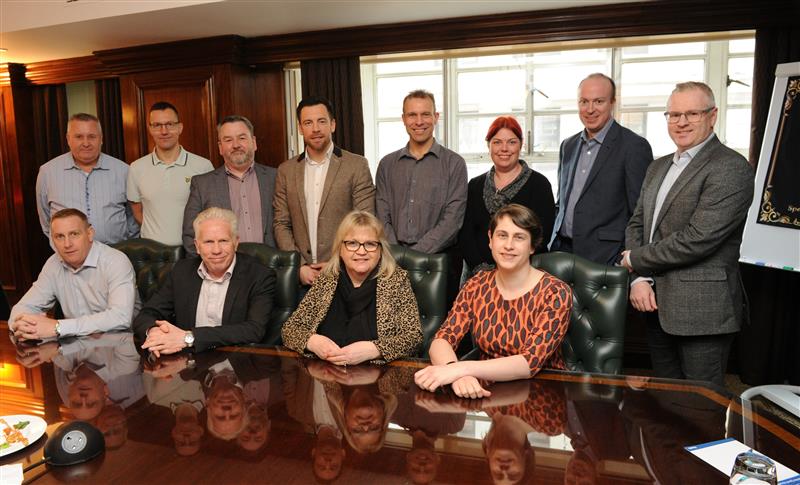
The future of the company car is consistently a hot topic, with different organisations taking varying approaches to the benefit.
Some organisations and drivers want the flexibility of a cash allowance, but others want to be part of the company car scheme due to the benefit-in-kind tax savings offered by electric cars and the greater control over compliance it gives to a fleet manager.
In this round table, sponsored by sopp+sopp, fleet decision-makers who were short-listed for this year’s Fleet News Awards debate this, among other topics.
A second Fleet News Awards finalists roundtable also took place - you can read what those fleet decision-makers had to say here.
Fleet News: What trends have you seen with people wanting to opt in or out of the company car scheme?
Denise Hawkins, fleet manager, Stannah Management Solutions: I’ve had people in company cars saying that ‘so-and-so is on a cash allowance, why can’t I have one?’. And I tell them it’s because they do 20,000 miles a year. But people are saying it’s not fair and they’re being hit because they do more miles for their job.
We’ve also had to revamp our policy to firm it up because some people were on cash allowance so had grey fleet, others were on the car scheme but it wasn’t necessarily written down anywhere what the eligibility for one or the other was.
Some people might have had some wording in their contract that said, very vaguely, they would be offered a company car or cash allowance dependent on their business role.
It was a ridiculously grey area. People were saying ‘well, I’ve always had a car so I should have a car now,’ and other people going ‘well, this is costing me too much money, I don’t want a car anymore’.
I’m trying to get through that and basically just making it black and white.
For those people in the company car scheme, we say it boils down to safety at the end of the day.
We have a duty of care to make sure they are 100% safe and, although we are extremely strict with our management of grey fleet, our drivers will be safer in a car that we manage and know everything about compared to one we don’t.
That was basically our argument for who got a car and who got the allowance and was in the grey fleet.
Matthew Hammond, UK fleet and transport manager, Altrad Services: We looked at our data and had some people with company cars doing 6,000 miles a year, and it was like ‘what are we doing?’, so as those leasing contracts came to an end, we got HR to negotiate with them to get them out the car scheme.
A lot of people then jumped ship and went straight to cash allowance, but other people are just so used to having a company car: they rely on it. It’s an emotive subject; people are passionate about cars.
When the benefit-in-kind rate went to 24% people couldn’t wait to get out of the company car scheme, but with it down at 2% for battery electric vehicles people think they can come back into it.
Fleet News: Do perk cars have a future?
Matthew Hammond: I don’t think you’ll ever get company cars like you used to. It’s a job-need thing now. I think if the whole dynamic hasn’t changed already, then it is changing.
If people are joining a company for the first time, they’re not coming in expecting a BMW or Mercedes-Benz. They don’t even expect a car. They just want the cash and to find their own car.
Peter Jardine, group fleet director, Connells Group: Estate agents are incredibly motivated by cars. We have people moving from one estate agency to another because they’ve been offered a better car, never mind a higher salary.
We still have quite a high perk fleet. We had about 5,000 cars about three years ago and our overall fleet sits around 3,000 at the moment – probably 1,000 are perk - as we did have an exercise where we reduced it.
However, all that served to do was pump up the grey fleet because all people did was move from the company car to grey fleet.
What I’ve found over the past few years was that when BIK was going up, that naturally took people out of the company car and into cash.
Now we’ve got electric vehicles with 2% BIK, more people want to come back into the car scheme, which we’re trying to hold off on because we quite like the balance where it is.
We’ve just launched a salary sacrifice product so we’ve kind of directing people who want to come back into the car scheme because they want an electric vehicle to look at that.
Matthew Hammond: Salary sacrifice schemes are an easy way to get people into EVs. I do wonder if we are going to get to a point where something gets changed though as it’s almost too good to be true.
Fleet News: How do you reimburse drivers with battery electric vehicles for business mileage?
S-J Mitchell, senior fleet and supply chain manager, OVO Energy: Our drivers can have a free home charge point because we actually install them as a company.
When the advisory electric rate (AER) was 5ppm we reimbursed drivers that, but it just wasn’t working: it didn’t equate to what they paid to charge from home.
It was painful. We then worked with Mina for their reimbursement system and after a long trial to make sure we had it nailed, we on-boarded it. It’s just been a dream and the drivers love it.
The next challenge we’ve got is those people who are on electricity pre-payment meters.
Matthew Hammond: This has been a tricky issue for years. With the AER rate at 9ppm we’re getting there, but it is still probably four or 5ppm behind where it should be.
It’s slowly creeping up but it could be another 18 months before we get to a level where it’s about right.
S-J Mitchell: If you give a BEV to a driver who’s used to a diesel, when they plug it in at home their electricity company automatically looks at it and goes ‘hang on, you’ve suddenly jumped from that as your normal to this as your normal. I’m going to increase your direct debit’.
We get drivers saying their bills have doubled overnight because we’ve given them an electric van.
Luckily, a large proportion of our drivers have their electricity supplied by us so we go in and manually circumnavigate the system because we know Mina is going to credit it.
Dale Eynon, director – DEFRA Group Fleet: The golden ticket is for HMRC to approve a reimbursement rate for a company if you can prove your actual cost is more than the AER.
One of our leasing companies has got a calculation based on their own internal fleet approved by HMRC.
If you extrapolate that same model, in theory you should be able to say to HMRC ‘you’ve approved this, here’s all the evidence for our fleet’, and then start paying 10p, 11p, 12p or whatever.
If you refresh that data set every quarter then you can change your rate depending on that. If you’ve got tax specialists in your company, it’s worth looking at.
Denise Hawkins: Unless you have got a lot a resources internally to do it, the only way to do it fairly is to use one of those third parties like TMC as that takes a lot of pressure off, but obviously you do have to pay for that service.
It is a big headache, and it is either an internal headache if you have the resources for it, or you pay for it to be someone else’s headache.
We do an actual cost reimbursement: drivers submit their kWh information as well as their mileage and home tariff rate and we calculate it that way.
Delegates
- Matthew Hammond, UK fleet and transport manager, Altrad Services
- Peter Jardine, group fleet director , Connells Group
- Mandy Vanstone, purchasing and fleet manager, Miele Company
- Mark Woodworth, transportation director EMEA, Univar Solutions
- Denise Hawkins, fleet manager, Stannah Management Services
- Dale Eynon, director – Defra Group Fleet, Environment Agency
- S-J Mitchell, senior fleet and supply chain manager, OVO Energy
- Stewart Taylor, fleet manager, Police Scotland




















Login to comment
Comments
No comments have been made yet.